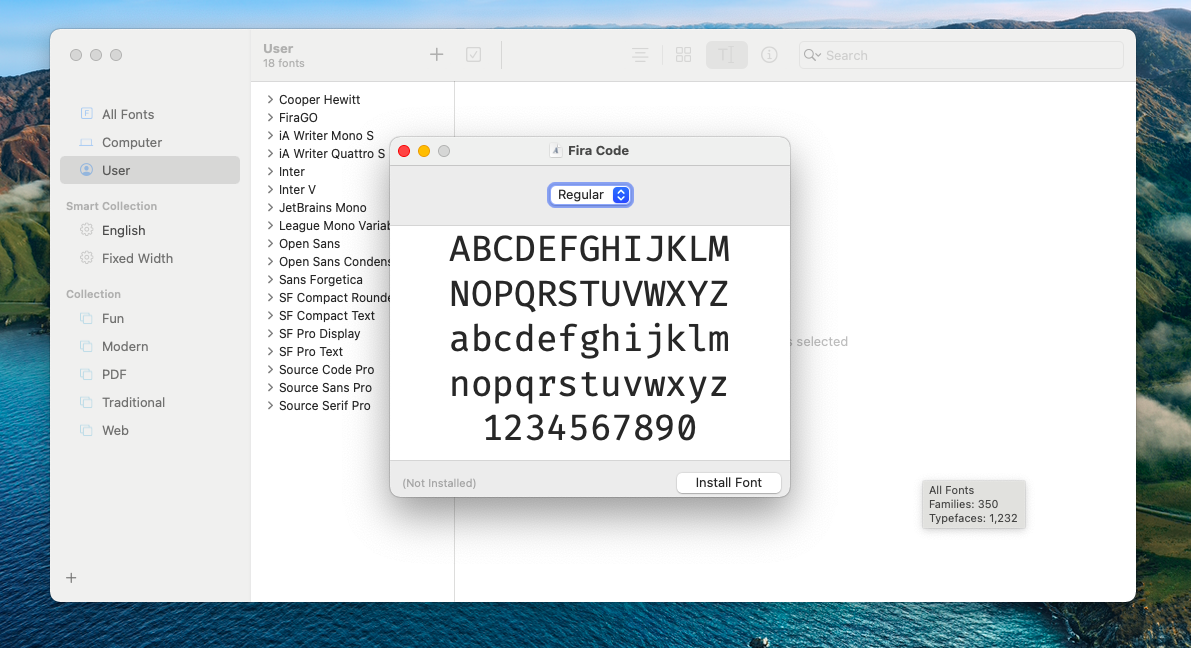

Or even worse: classification names of which most designers forgot what they actually mean (let alone what they might be good for) after they left the art academy. The typeface styles that might fulfill the criteria designers and their customers are looking for are usually hidden in alphabetical lists, family groupings and ‘special interest’ lists made up by users or meticulously edited staff-picks. In many browsers it is impossible to directly compare condensed or italic styles, let alone a more precisely defined style. When comparing romans, italics or other styles, other family members usually are ‘in the way’. Most current online type browsers do not enable designers to compare typefaces this way though. Who is going to take this challenge today? Still, the possibilities of this catalogue have not yet made it into the current state of type browsing. And of course the FontBook is a huge step forward. A similar system has been implemented by Google fonts. We have seen several attempts like the Type Navigator that went in this direction. Maybe with sliders or buttons that show sample characters that illustrate what ‘slant’ or ‘old style’ actually may look like etc. It could allow the user to change the bandwidth of the grouping. It could be combined with text, type size, line length and line feed defined by the user.

It could also be faster and more up to date. One would not have to go through the alphabetical index to find out the number of the page on which hard-to-classify-on-the-spot typeface may be shown. The fine grain classification descriptions could be hidden behind sample characters. Today, type browsing could (easily) be made much more advanced than the analogue Photolettering catalogue from 1971 shown here.
#Fontbook and rightfont how to#
The big question of type browsing today is how to help designers in picking the best in a way that suits their thinking. Thousands of excellent but lesser known typefaces are not being used, because designers are not aware of them or simply overlook them. As a result, designers either stay with families they know, or pick something that currently is ‘in the picture’. I think that most designers do not prefer to think in names and the systems behind typeface classification, they are visual people who like to think that they take their decisions by intuition. Sure, these are all wonderful things that help designers to find what they need, but they are time-consuming and when it comes to the typical day-to-day designer jobs as sketched out above, one has to ‘know’ where the styles one is looking for might be hiding. Or from which they never heard when they were trained as an online-designer.

#Fontbook and rightfont series#
What can a type browser do for a designer who is looking for an elegant italic with thin hairlines for a fashion magazine? a sturdy roman for an e-Book? a condensed sans for the ingredients section on a packaging design? a typeface that might fit the historical or artistic context of the subject? a fresh sans serif with large apertures for a signage project? a typeface with an x-height that is big enough to be read by people with low vision? a trendy humanist slab serif for the headings of a brochure? an italic for a series of medium level food products which cannot be ‘served’ with a fancy script? a typeface with angular serifs that fits the low-polygon craze? Italic, light, bold, narrow, wide … but that is just the start. Designers often have a feeling of about which characteristics a certain typographic element in their design should have. The fine grade typeface classification results in groupings that enable designers to easily compare typefaces with similar characteristics.

#Fontbook and rightfont manual#
These are pages from the Photolettering’s One Line Manual of Styles from 1971.


 0 kommentar(er)
0 kommentar(er)
